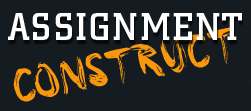
This week I took a day trip up to New York City (always fun) which led to two of today's speedlinks:
• I was up there to be interviewed for
Crossfader, which brings together people from the genres of photo, video and audio. Derek Mazzone, who is running the joint, has a pan-creative vision for sharing and mashup that is not unlike what we do here on Strobist.
(I'll also post a link to the interview when it is published.)
• While walking in NYC on 57th street (the main purpose of which is to show you how much money you do not have) I came across a
wonderful exhibition of underwater photography by Alex Kirkbride. The photos are from a book that is available
here. Amazing stuff.
• Still mooching off of my
last trip up to NYC, PhotoShelter has placed several more
videos of presentations from their national tour of meetings.
That there's some good Photo TV. Definitely worth a look.
• I have had several people ask how I snagged a Diet Mountain Dew sponsorship. (See button at bottom of sidebar.) Easy -- I didn't. That's just my beverage of choice, the caffeine inside which powers this site. Total fanboy linkup. If you click on the button, you'll see the
shark commercial, but I also like the
illegal puppet commercial.
(And if you happen to work for the folks who make Diet Mountain Dew, you have
no idea how cheaply you could have me... )
-30-
































